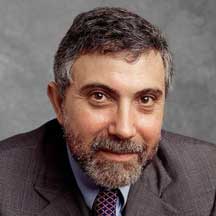By Dr. Susanne King
Thursday, June 08
LENOX
THE CANADIAN health care system hit the news again last week. A new study by Harvard Medical School researchers reported that Canadians are healthier than U.S. citizens, even though the United States spends twice as much per person for health care.
The study analyzed data from a joint survey carried out by U.S. and Canadian governmental agencies. The authors found that U.S. residents had higher rates of nearly all serious chronic illnesses, including chronic lung disease, arthritis, diabetes and high blood pressure. In addition, race and income disparities in health care were larger in the United States. Despite the fact that we currently spend $2.1 trillion annually on health care in the U.S., cost is the biggest barrier to care: 30.4 percent of U.S. residents reported having an unmet health care need because they could not afford it.
“Most of what we hear about the Canadian health care system is negative; in particular the long waiting time for medical procedures. But we found that waiting times affect few patients, only 3.5 percent of Canadians, vs. 0.7 percent of people in the U.S. No one ever talks about the fact that low-income and minority patients fare better in Canada,” said Dr. Karen Lasser, the study’s lead author.
#
AA co-author, Dr. Steffie Woolhandler, commented, “Our study, together with a recent study showing that people in England are healthier than Americans, is a terrible indictment of the U.S health care system. A single payer national health insurance system would avoid thousands of needless deaths, and hundreds of thousands of medical bankruptcies each year. In 1971, Congress almost passed national health insurance. Since then, at least 630,000 Americans have died because they failed to act. (18,000 people die each year because of lack of access to health care). “How much longer must we wait?”
We spend twice as much per person for health care in the United States as they do in Canada (in Massachusetts we spend almost three times as much), yet as the recent comparative study shows, we get much less for our health care dollar than our neighbor to the north. The percentage of the U.S. gross domestic product used for health care is almost double what is spent in Canada, taking away funds from other vital services in the U.S, like education. Yet our life expectancy is 2.5 years less in the United States, and the incidence of chronic illness is higher.
Last month, former president Bill Clinton was in Canada speaking at the World Leaders Forum. Responding to a question about the interest of some in Canada for privatization of their health care system, Clinton said the last thing they should do is “let the health care finance tail wag the health care dog.” He said our system is a mess because the U.S. spends 34 percent of its health care dollar ($280 billion) on administration “to pay two million people to go to work every day for all the providers and insurers, and play tug of war. It is insane. It is a colossal waste of money. Don’t go down that road.”
By contrast, our Medicare system spends 3 percent for administrative costs.
#
I was at the Democratic Convention last weekend, staffing a table for Physicians for a National Health Plan (PNHP), a group of 14,000 physicians who advocate for a single-payer health care system. Single-payer health care is just like the Canadian system, in which the government is the “single payer” for health care, eliminating the multiple insurance companies with their exorbitant profits and high administrative costs.
In Massachusetts, 62 percent of physicians have said they support single-payer. The movement for significant health care reform is growing. The extraordinarily flawed health care “reform” bill recently passed in Massachusetts will maintain our current system, which is much more expensive than Canada’s and leaves us sicker.
A change to a single-payer system is the only reform that will provide universal, affordable and comprehensive care, as well as contain rising health care costs. This is not an experiment. We have only to look to Canada to see that they not only do it cheaper, they do it better; with a healthier population that lives longer than we do.
